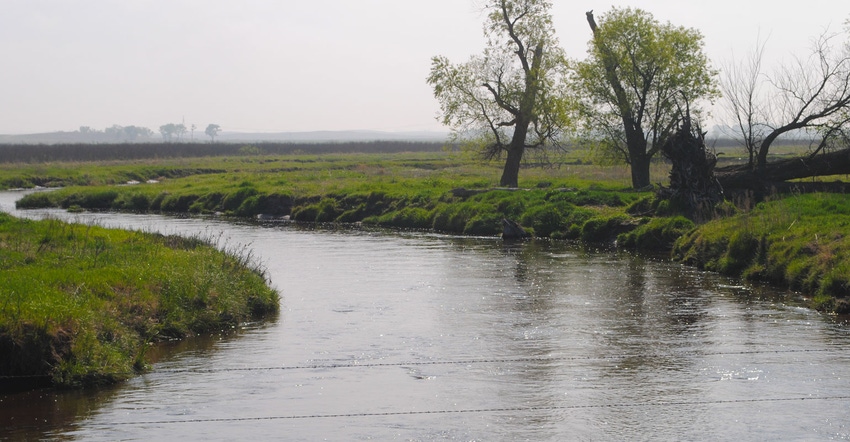September 2, 2021

A court decision in late August to scrap the Trump administration’s Navigable Waters Protection Rule brings back the long-running debate and uncertainty of federal regulation of water and water quality.
The Trump administration had repealed and then rewritten the Waters of the United States rule written by the Obama administration in response to lingering issues related to Supreme Court rulings from more than a decade ago and varying arguments about their interpretation.
The Biden administration had already indicated plans to rewrite the rule again, and the latest court action paves the way for a new rule to come. However, it also raises a great deal of uncertainty as the pendulum on federal regulation seems to swing back and forth, and the process leaves everyone without a working definition of WOTUS beyond the earlier court interpretation.
WOTUS timeline
The regulation of WOTUS dates back decades to the Clean Water Act of 1972 and the protection of navigable waters deemed to be waters of the U.S. The reference to navigable waters alludes to navigation and commerce, which could move between states and thus fall under federal jurisdiction via the Interstate Commerce Clause.
The act did not further define WOTUS at the time, but ultimately the U.S. Army Corps of Engineers and EPA defined WOTUS through regulations.
In the 1980s, the Corps and EPA defined WOTUS to include all waters and wetlands for which the use, degradation or destruction could affect interstate or foreign commerce. That meant something more than just the navigable waters in the historical sense of which rivers could float a boat for commercial activity, but the definition still left substantial room for interpretation.
Regulatory efforts and lawsuits led to Supreme Court cases and decisions in the 2000s that restricted the interpretation of WOTUS and the reach of federal regulations. However, split decisions and opinions published by the court left open the debate and legal interpretation over waters that have a “significant nexus” or connection to other waters that are deemed to be WOTUS.
EPA and the Corps published updated guidance in 2008 in response to the Supreme Court ruling. The guidance addressed waters and wetlands that are categorically defined as WOTUS, are deemed to be WOTUS based on a significant nexus to other WOTUS, or are categorically excluded from WOTUS.
Over the past decade, there has been a substantial push for defining WOTUS through new regulations and a substantial pushback from opponents of whichever administration was leading the rule-making process.
The issues relate not only to which waters are or are not covered, but also which other water courses may be covered because they lead runoff to covered waters — including ephemeral (or temporary) streams, ditches and other features — as well as how much land area (and activities) surrounding covered waters may be regulated.
More debate
The Obama administration published a rule in 2015 that revised the definition of WOTUS. The rule was immediately caught up in a debate about whether it offered clarification as the administration suggested, or whether it fundamentally expanded federal authority beyond historical interpretation or legislative intent.
The rule was challenged in court by opponents who argued it was federal regulatory overreach (and some groups who argued it didn’t go far enough). A court injunction prevented the rule from going into effect in many but not all states.
Former President Donald Trump campaigned on promises of deregulation, and WOTUS was high on the list. However, the process of pulling back on WOTUS was complicated by rule-making attempts to simply rewrite the Obama rule that were denied, forcing a formal rule-making process to first repeal the Obama rule and then to propose and implement a new rule.
Ultimately, the Obama rule was repealed in 2019, and the new Trump rule was implemented in 2020. The Trump administration decision to name the new rule the Navigable Waters Protection Rule as opposed to WOTUS signaled its attempt to substantially reduce the reach of federal regulation, at least as compared to the Obama rule, but it too was challenged immediately in court by opponents.
Where are we now?
President Joe Biden’s election brought in a new administration that was amenable to pulling back the Trump rule and rewriting it again. Now, with the court action, the Biden administration does not need to repeal the Trump rule and then rewrite it, but rather start from scratch with a new definition of WOTUS based on the Supreme Court record — as well as the experience of more than a decade of interpretation, rule-making and court challenges.
The final product could be a working definition that navigates somewhere between the Obama rule and the Trump rule, but the outcome and the likely legal challenges to follow suggest we will keep debating WOTUS and the role of federal regulation for years to come, likely long enough to be addressed by yet another president down the stream.
Lubben is the Extension policy specialist at the University of Nebraska-Lincoln.
About the Author(s)
You May Also Like






